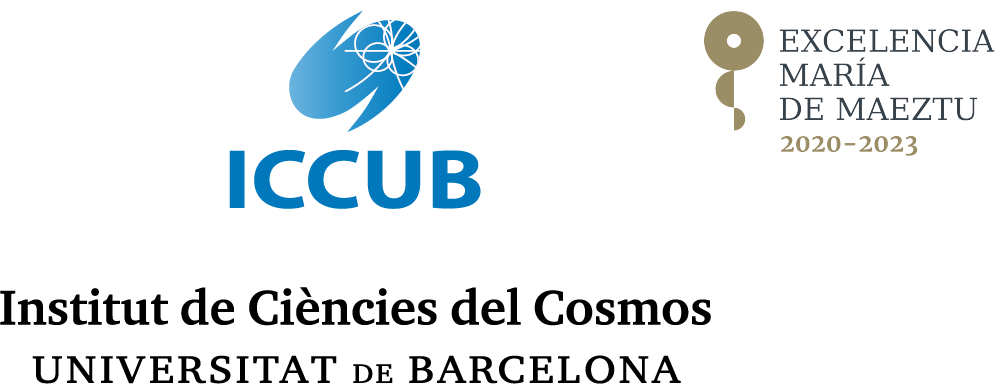Machine Learning at the ICCUB
Sala de Graus Eduard Fontserè
UB Physics Faculty, Sala de Graus Eduard Fontserè
Description:
Machine Learning (ML) is a powerful tool that has accelerated discoveries across numerous scientific fields. The flexibility of ML allows for the meaningful cross-fertilization of ideas among disciplines, making it an even more valuable asset.
At the ICCUB, there are several on-going activities exploiting ML for physics and astrophysics applications. This workshop aims at facilitating the developments of on-going and nascent work at the ICCUB by showcasing the ML tools that are currently being developed. By bridging the gap between different groups, we want to take a global look at the uses of ML; identify common avenues of exploitation; and stimulate cross-fertilisation to consolidate the use of ML tools at the ICCUB and foster new potential collaborations.
Our in-person workshop will consist of a series of invited plenary overviews as well as contributed talks. We invite ML users and developers at the ICCUB to present their work, focusing on concrete applications of ML tools. To this end, we encourage you to submit an abstract to help us best accommodate your talk. We specifically aim to support the participation of early career researchers.
Scientific Organizing Committee
Tomas Andrade (ICCUB)
Teresa Antoja (ICCUB)
Arnau Rios (ICCUB)
Juan Trenado (ICCUB)

Acknowledgements
This event is part of the grant CEX2019-000918-M funded by MCIN/AEI/10.13039/501100011033.

